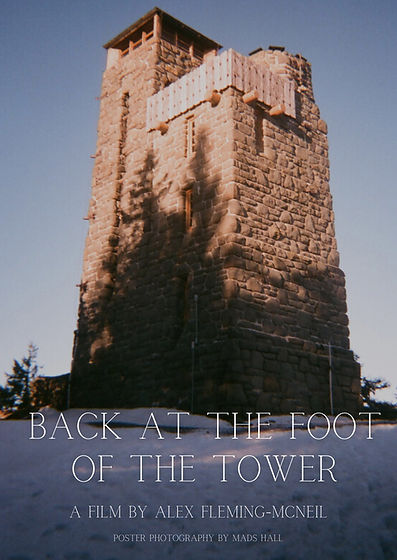
Back At the Foot of the Tower
Alex Fleming-McNeil
10 mins | 2024
For 45 years, Rolf Erikson has volunteered time and materials to maintain the Depression-era watchtower atop Mount Constitution on Orcas Island, WA. The film explores the importance of working on historical preservation to maintain a collective sense of identity.

For 45 years, Rolf Erikson has volunteered time and materials to maintain a Great Depression-era watchtower on Orcas Island, Washington. Built on a mountain and from local sandstone, the tower began to erode before it was even completed. Now, Rolf contends with hard weather, tourist traffic, and little support from the state to preserve "the sacred beauties of life at the tower atop Mount Constitution."
Following Eriksen, Back at the Foot of the Tower explores the meaning of work—including that which appears futile—the importance of historical preservation, and the role of physical objects in maintaining a collective sense of identity.
Back at the Foot of the Tower brings attention to Rolf's work while also inviting viewers to consider the meaning of their own labor, and how their sense of identity and tradition are informed by structure and place.

Alex Fleming-McNeil
Alex Fleming-McNeil is a first-time director based in Washington State. He is interested in making movies about how capitalism changes our institutions and everyday life. He studied political theory at SF State and UC Berkeley and holds a graduate degree in political science.
CREDITS
Director
Alex Fleming-McNeil
Cinematography
Alex Fleming-McNeil
Recorded by
Alex Fleming-McNeil
Edited by
Alex Fleming-McNeil
Edited by
Michael Beuttler
Original Music
Keenan Dubois
Remix recording
Keenan Dubois
DIRECTOR STATEMENT
Most of what a person creates through their labor will be gone within their lifetime. Despite or perhaps because of this, the importance of one's work is usually assumed to be closely related to its durability and lastingness. I am fascinated by Rolf Eriksen's work—maintaining a tower that is "dissolving in place"—for the alternative vision it suggests about the relationship between work, permanence, and both personal and collective forms of meaning. It seems to me that there is an almost Sisyphean quality to Rolf's willingness to build and rebuild a structure that is actively collapsing around him. (To say nothing of the fact that Rolf, like Sisyphus, too rolls stones up a mountain.) I was also interested in people like Rolf who fill a gap left by the retreat of the state from funding public works. The tower, constructed in the Great Depression by the CCC, is a product of perhaps the pinnacle of state support for public building. Rolf is part of a network of dedicated people whose uncompensated labor goes toward providing care for the commons. To Rolf, preserving the tower is tantamount to conserving the cultural and historical identity of his community. Back at the Foot of the Tower brings attention to Rolf's work while also inviting viewers to consider the meaning of their own labor, and how their sense of identity and tradition are informed by structure and place.

